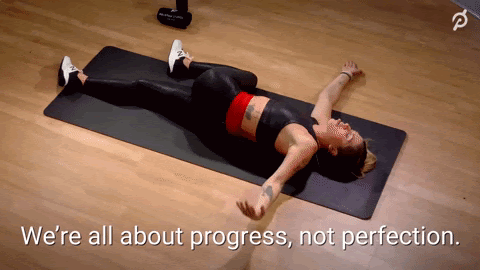7 steps to being a better business for the world
07.11.2023
5 mins read
Oh we do love a good clickbait title!
Facing major challenges like climate change and socioeconomic disparities, organisations have a choice:
- Step up.
- Land in future textbooks under “Companies That Watched the World Burn.”
Sure, there’s no magic formula for a better* business. We have some helpful advice, though. After going through the B Corp certification process, we picked up a few pointers on making positive changes.
By the way…
When we say ‘better*’, we’re talking about doing business as usual but with reduced negative impacts. Yes, profits are crucial (even nonprofits need money to operate) and that often means using resources. But the basic idea is to use them more responsibly.
So, don’t get hung up on constantly making a positive mark. Channels inner life coach. It’s about progress, not perfection.

With that out of the way, here’s how to pivot for good.
- Get all hands on deck
- Know where you stand
- Create clear goals
- Assign responsibilities
- Explore helpful tools
- Monitor and adjust
- Collaborate with charities and nonprofits
1. Get all hands on deck
Being a better organisation means reshaping how you operate. With the aim of minimising harm to people, communities and the planet.
This isn’t a one-person gig. True change requires everyone’s buy-in. That’s just how big changes roll.
Kick things off with a team meet-up. Maybe throw in some pizzas for good measure. Do it face-to-face if you can.
Discuss your ‘why’. Why are you stirring the pot? What’s the bigger picture? Then really listen to your team. Some might be sceptics and that’s okay. Hear them out. You’re not just looking for nods; you’re looking for real talk, suggestions, concerns and ideas.
After all, this is about making your team’s life better too. That’s the juicy fruit hanging within reach. Once you set the stage for change, you can start getting opinions on more concrete topics. Topics team members have unique insights into, from process improvements to company culture.
Change doesn’t happen overnight, so don’t stop when you start seeing results. Keep asking questions, keep listening and keep moving forward.
2. Know where you stand
Embarking on our B Corp journey, we tackled the B Impact Assessment’s 200-ish questions. Dissecting our practices across:
Governance
Workers
Community
Environment
Customers
This deep dive prompted us to ponder things like:
- How effective is our waste monitoring? (We’re fully remote, is everyone recycling? Tom has put the paper in the plastic bin again …)
- Do our services amplify our clients’ positive impact? Or do our clients even have any positive impact?
- Is our hiring process truly inclusive? And what does that even mean?
From this, we saw areas we could improve. If you’re not gunning for B Corp status (yet!), answering 200 questions might feel a tad extensive.
Still, inspired by this method, here are some useful questions. They’ll highlight your strengths and pinpoint improvement opportunities. It also gets you thinking about other questions you could ask that are relevant to your organisation.
1. Governance:
- What values and principles guide your business decisions?
- How transparent are your operations and decision-making processes?
- Are you holding regular reviews to assess and adapt your strategic direction?
2. Workers:
- Are your employees satisfied and how do you know?
- Do you offer fair compensation and benefits in line with industry standards?
- Is there a clear path for employee growth and professional development?
3. Community:
- How does your business activities impact the local community?
- Are you engaging with local organisations or causes to give back?
- Do you consider the ethical practices of your suppliers and partners?
4. Environment:
- How much waste are you generating and are there ways to reduce it?
- Are you making efforts to decrease your carbon footprint?
- Do you have a strategy for sustainable sourcing and resource use?
5. Customers:
- Are your products or services genuinely beneficial to your customers?
- How do you handle customer feedback and complaints?
- Are you committed to honest marketing and transparent pricing?
With a better understanding of areas of improvement, you can start setting clear and measurable objectives.
3. Create clear goals
What do you want to achieve in the next quarter, year or even five years? You might want to:
- Transition to 100% renewable energy sources within 3 years
- Partner with at least 3 local nonprofits for charitable projects in the next year
- Ensure that at least 30% of your suppliers or vendors come from minority-owned businesses within 2 years
- Achieve a gender-balanced board of directors within 1 years
- Introduce a feedback loop, aiming to respond to and resolve 95% of customer complaints within 48 hours
Are you excited yet? This is when the change starts to feel real.
For every big goal, carve out bite-sized milestones. Say you’re eyeing renewable energy within 3 years. Why not begin with scouting potential energy providers in the upcoming months?
4. Assign responsibilities
Get your team involved. Pinpoint who can carry out each goal. Maybe HR tackles the gender-balanced board and the supply chain team dives into green vendors.
If you’ve got money to spare (Yeah, we know, but it’s an investment!), think about bringing in the pros. Eyeing that 100% renewable energy? An energy consultant or sustainability expert can steer you right. Providing guidance on the best practices, available options and potential pitfalls to avoid.
5. Explore helpful tools
Achieve your goals more efficiently with technology. Think about using carbon footprint calculators. By plugging in your energy use or travel details, you get a clear picture of your carbon output. This tool zeroes in on your main emission culprits, guiding you towards greener choices.
If you’re up for innovation, take a leaf out of Tyler Grange‘s book. They rolled out an app to track team well-being. Our custom dashboard amplified its value, revealing the effects of changes – like their 4-day week. This insight lets them confidently say, “Our strategies are genuinely enhancing our team’s lives.”
6. Monitor and adjust
Things don’t always go as planned. So, how about pencilling in some regular heart-to-hearts with the team? Monthly or quarterly will work. Use these meetings to gauge how you’re doing. If something’s gone wonky or a curveball has come your way, no sweat. Just tweak your targets. Be flexible.
7. Collaborate with charities and nonprofits
Make a bigger impact by pooling resources with charities and nonprofits. Find causes aligned with your brand’s values and partner up. It’s not just about money; offer your expertise, co-host events or share resources.
In return, tap into their on-the-ground knowledge and connections. It should be a win-win collaboration, where both parties benefit and amplify each other’s missions.
Small steps, big impact
Remember that “better business” isn’t about having a sparkling halo or superhero cape. But if you’re feeling it, there’s always a costume shop nearby.
You’re taking manageable steps towards reducing any negative impact. Creating a more sustainable, inclusive and happier future in the process.
Perhaps you’re improving your environmental impact. Discussing boardroom diversity over a team lunch. Forging partnerships with nonprofits to increase positive change. Every action you take nudges your business closer to being better for the world.

Want more of this goodness? Stalk us (we don’t mind!) on LinkedIn and Twitter.
